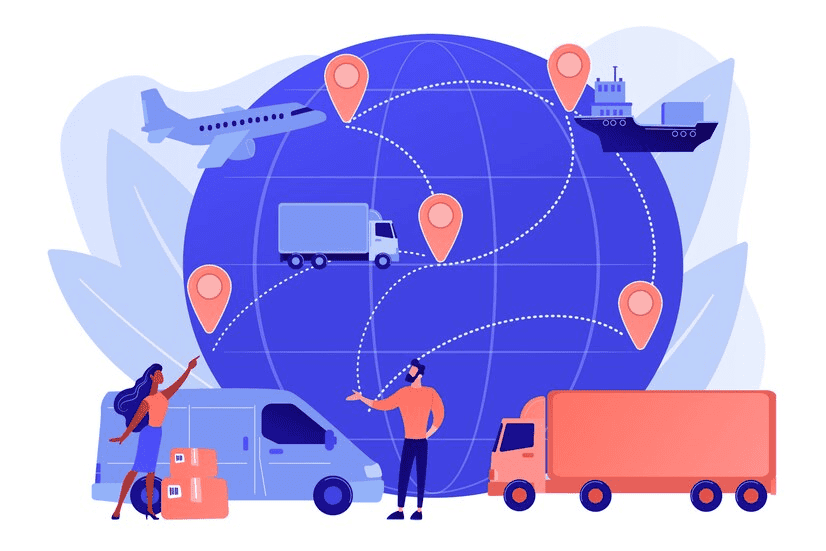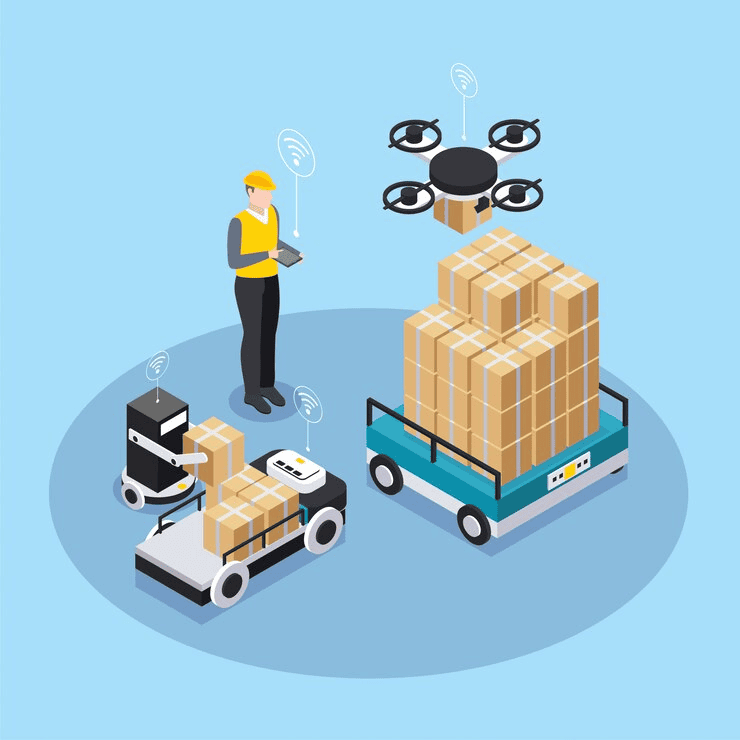Technology is driving a transformation of the logistics industry. Supply chain operations are getting streamlined with various innovations in computer vision that make movement of goods more efficient. Logistics companies are increasingly adopting more and more advanced technologies to gain a competitive edge, from automated warehouses to self-driving delivery vehicles.

Automated Optical Inspection Systems
Automated optical inspection (AOI) utilizes cameras, sensors, and software to inspect goods and components in the supply chain visually. Often designed or enhanced by a computer vision development company, AOI solutions are able to detect defects, check assemblies, and verify quality far faster and more accurately than humans.
AOI systems are used in both logistics facilities and warehouses to allow for automatic scanning of incoming inventory and outbound shipments. It means that staff can flag damaged, defective or incorrect items immediately. Automated quality control helps increase warehouse efficiency, minimize returns, and ensure that only the best products flow down the supply chain.
AOI technologies are now becoming more commonplace within the operations of more logistics providers. It captures high-resolution images of parcel surfaces and rapidly analyzes them for accuracy and defects. It allows for real-time redirecting of problematic parcels.
The global automated optical inspection systems market size was valued at USD 1.01 billion in 2023 and is projected to grow at a CAGR of 20.6% from 2024 to 2030. This rapid adoption will be driven by the technology’s ability to mitigate rising labor costs and eliminate human inspection errors that often lead to product recalls and returns.
Advanced Robotics and Automation
Advanced robotics and automation will transform logistics operations over the next decade. Computer vision enables robots and automated systems to perceive environments, identify items and make decisions. This allows more supply chain tasks to be automated.
Warehouses have already automated many repetitive, dangerous and labor-intensive tasks such as heavy lifting, retrieving items and transporting materials. Amazon utilizes over 750,000 warehouse robots across its global fulfillment centers. These robots can scan shelves to check inventory, lift heavy pallets and transport packages to different parts of the facility. This automation allows Amazon to achieve faster processing times and higher order volumes.
Looking towards 2025, warehouse robotics will become even more advanced and capable. Robots guided by computer vision can identify diverse SKUs and carefully pick, pack and palletize items for shipping.
Autonomous mobile robots (AMRs) are also gaining traction in logistics facilities. These self-driving robots can safely and efficiently transport packaged items across large warehouses. AMRs use lidars, sensors and computer vision to navigate, identify obstacles and autonomously drop off packages.
Drones and Autonomous Vehicles
Logistics leaders are accelerating investments in drone and autonomous vehicle technologies, driven by AI in logistics examples that showcase their potential for transforming the industry. Computer vision allows these systems to operate, navigate, and deliver goods without human assistance.
Companies are adopting camera-equipped drones to support inventory management, transport lightweight packages, and inspect infrastructure. For example, Penske Logistics uses drones to conduct daily inspections of its trucking lots and identify potential equipment issues. This allows truckers to receive faster repairs and spend more time on delivery routes. Additionally, warehouses leverage drones to scan inventory labels on high shelves, which improves warehouse accuracy and efficiency.
The application of drones for last-mile delivery will also expand moving forward. Amazon has already begun autonomous drone deliveries in isolated communities. Their hexacopter drones use an array of cameras, sensors and software to transport packages to customer’s homes safely. As regulations evolve, drones supported by computer vision could offer faster, more flexible and low-cost delivery options.

Machine Learning Innovation
Computer vision technologies are becoming a little more intelligent through machine learning algorithms. Machine learning models can be trained by analyzing large rolled datasets in order to accurately identify items, capture anomalies, classify objects and make predictions. When you reach this level of visual intelligence, you unlock further automation and efficiency gains in your supply chain.
Robots and drones are given the power to evaluate and take appropriate actions using machine learning. End-to-end grocery solutions provider Ocado uses AI-enabled robots in its warehouses to pick and pack perishable items for delivery. The robotic arms in use have flexible grippers that are guided by machine-learning models that gently handle fruits, vegetables, meats and fragile items. It allows the customers to receive fresh and undamaged products.
For the future, machine learning will be increasingly embedded into more supply chain automation projects to make them more accurate, powerful and valuable.
Enhanced Visibility and Decision Making
Computer vision technologies are providing logistics leaders with unprecedented visibility across global supply chains. Automated systems can capture rich data and insights that optimize warehouse flows, streamline yard operations and improve last-mile delivery.
Machine learning can unlock supply chain forecasts from computer vision systems. Algorithms can analyze the videos, images and data collected by automated systems to predict issues, future demand and capacity constraints. This allows logistics companies to take a proactive approach and plan accordingly. For instance, a 3PL could predict an uptick in customer orders or equipment failure based on emerging trends spotted by an AI model.
Overall, computer vision gives supply chain participants an information advantage to meet customer demands and business objectives efficiently.
The Path Forward
The rapid pace of technological innovation will bring new applications of computer vision across the logistics value chain. As algorithms, datasets and computing power improve, automated systems will become even smarter and more capable over time. However, companies need to strategically evaluate how these emerging technologies can create specific value in their operations.
Below are key steps logistics leaders can take today to capitalize on the future promise of computer vision:
- Assess operational pain points that computer vision could help address. Prioritize automation for repetitive, dangerous or low skill tasks that currently require significant manual work.
- Identify relevant use cases based on product portfolios and distribution models. For example, automated optical inspection or robot warehouseics may provide the most immediate return on investment.
- Start small with pilot projects and gradually scale successful solutions across operations. Carefully evaluate technological capabilities and economics.
- Develop necessary infrastructure with flexibility to support new computer vision systems over time. This includes physical, digital and organizational infrastructure.
- Closely monitor technological advancements in computer vision and logistics automation. Stay ahead of the latest innovations that may impact strategies.
- Foster internal skills and talent to effectively leverage leading-edge technologies as they mature. Bridge knowledge gaps through training programs and external partnerships.
By proactively embracing computer vision and automation, logistics companies can boost resilience, agility and performance for the dynamic challenges ahead. The future competitiveness of supply chains will depend on their ability to turn data into actionable insights that create stakeholder value. Computer vision provides the foundation for logistics to this leaders achieve vision of connected, intelligent and efficient operations.